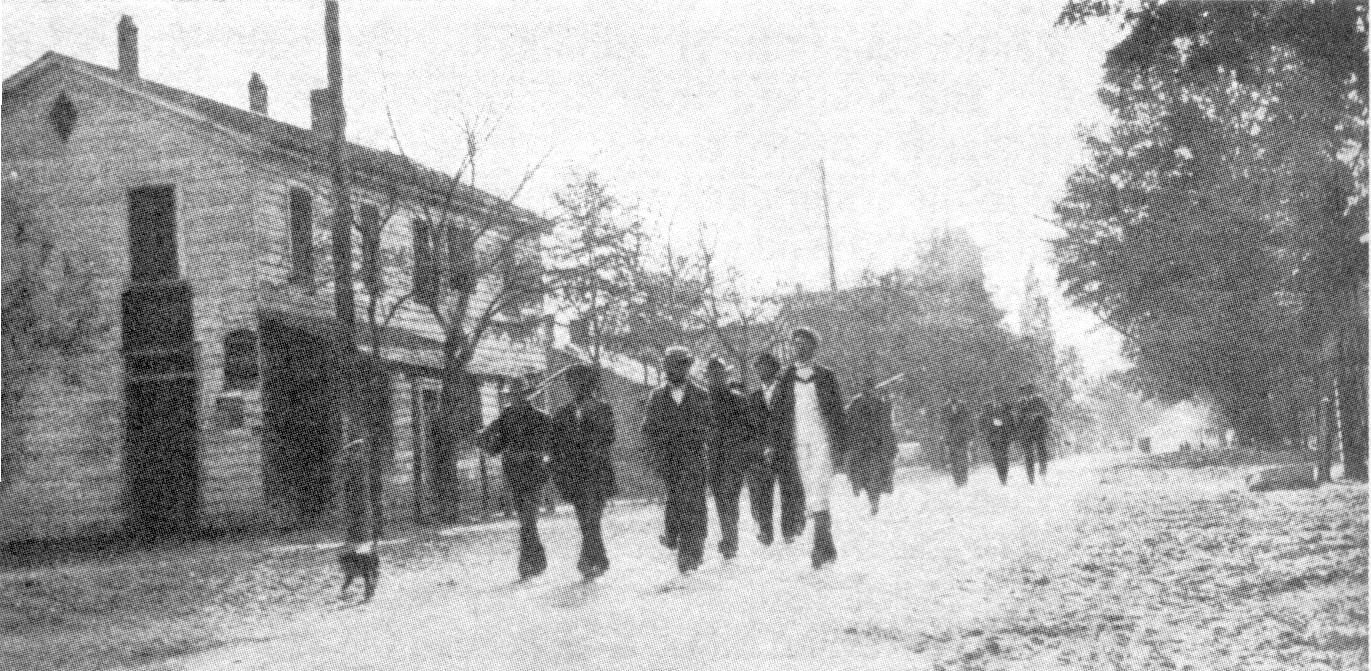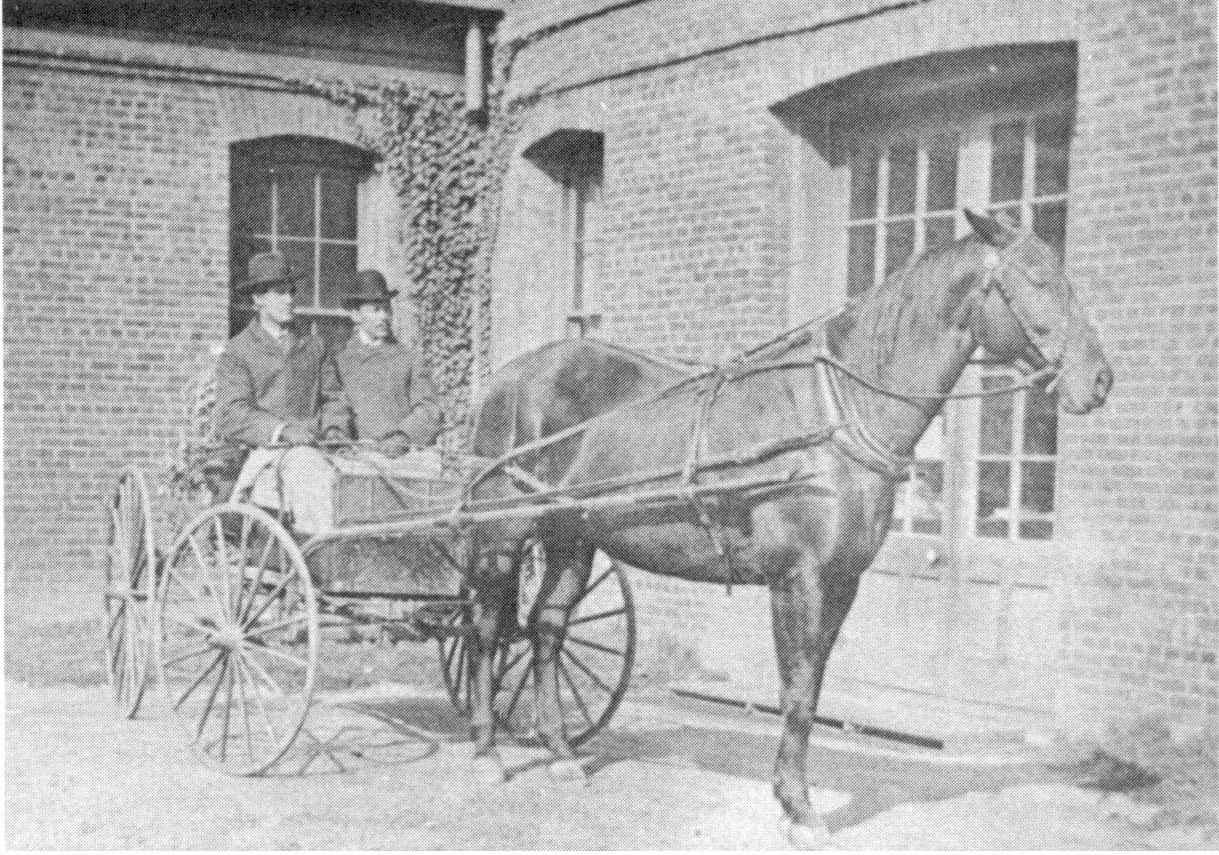CITY GOVERNMENT IS OVERTHROWN

Black prisoners taken into detention.
From
Collier's Weekly, Nov 26, 1898
CITY GOVERNMENT IS OVERTHROWN

Black prisoners taken into detention.
From
Collier's Weekly, Nov 26, 1898
By three in the afternoon of November 10, 1898, the conspirators were ready to carry through on their determination to overthrow the city government. A large crowd of armed white men marched to city hall, where Mayor Wright and several alderman had sequestered themselves.Literally at gunpoint, Mayor Wright and all of the members of the city council who were presented were forced to resign, and a new city government was formed. Captain John Melton of the city police had also been arrested and he and all of the other members of the city police department were also forced to resign, and Edgar Parmele was made chief of police. There was no resistance. Wright, Melton, and the others were happy to escape with their lives.
In addition to the white Fusionist leadership in the city, many African American leaders were also arrested and/or driven into exile. These included:
By evening, all of the men who had been marked for exile had fled on their own or had been arrested and forcibly evicted from the city.Alex Manly and his brother Frank Manly. There is an oral tradition that while they were fleeing, the Manlys were stopped at a checkpoint, assumed to be white, given a rifle, and told to "be on the lookout for that nigger editor Manly." Thomas Miller, a pawn broker reputed to be one of the city's largest land owners. Carter Peamon, a barber who served as a peacemaker early in the riot, left the city by train, jumped the train at a checkpoint, and was gunned down. Robert Bunting, the U.S. Commissioner, who was married to a black woman. He was marched at gunpoint, with other Fusionist leaders, through a jeering white crowd to the train. William French, a particularly hated white Republican leader, who had moved to Wilmington after the Civil War and had been a businessman and Republican political leader for over three decades. French was almost lynched by the mob near the station. L. A. Henderson, a black attorney, who demanded and got a military escort for himself and his family to the railroad station. Some of Henderson's property would later be purchased by St. James Episcopal Church at a severe discount to its original price. Armond Scott, the black attorney who had been charged with giving the response of the black leadership to Waddell that morning. Scott would become a federal judge in Washington, D.C. One of his descendents, Catherine Moore, is a member of the Wilmington City Council. Rev. J. Allan Kirk, head of the Ministerial Union and an outspoken black leader. He hid in the black cemetary, then fled through woods to safety. Kirk claimed later that hundreds of African Americans had been killed in the riot.

Alex and Frank Manly prepare to fleeThe same afternoon as the city government was forced to resign, a new municipal government was "elected." Col. Waddell was made mayor, a position he would hold for several years. Hugh MacRae and J. Alan Taylor became aldermen. Walker Taylor also became an alderman in later years. In fact, virtually all of the civic leaders in Wilmington for the next decade had been signatories to the "White Declaration of Independence."
This event was unique in American history. There had been "race riots" previously, and there would be many more, in which white mobs destroyed black homes and businesses and killed black citizens:
But the Wilmington "riot" offered a very different kind of model to the South. It was a planned, violent insurrection against an elected, legal government, albeit one that the "revolutionaries," on racist grounds, refused to acknowledge as legitimate. It is, in fact, the only known instance of a coup d'etat in American history. (For websites on the racial violence in other cities, see Acknowledgements, Books and Resources.)Danville, Virginia, 1883 Lake City, SC, 1898 New Orleans, Louisiana, 1900 Atlanta, Georgia, 1906 St. Louis, Missouri, 1917 Chicago, Illinois, 1919 Rosewood, Florida, 1923 Tulsa, Oklahoma, 1925 Moreover, the Wilmington riot and coup, precisely because it was carried out as the overthrow of what was perceived as the "black" government, marked the beginning of the Era of Segregation in North Carolina. The Wilmington "white supremacist revolution" had declared war against African American political and economic equality, and had taken up arms to put blacks back in the status of quasi-slaves. They were successful.
return to Table of Contents
return to 4.3Link to Chapter 4.5:
THE FEDERAL GOVERNMENT DOES NOT INTERVENE